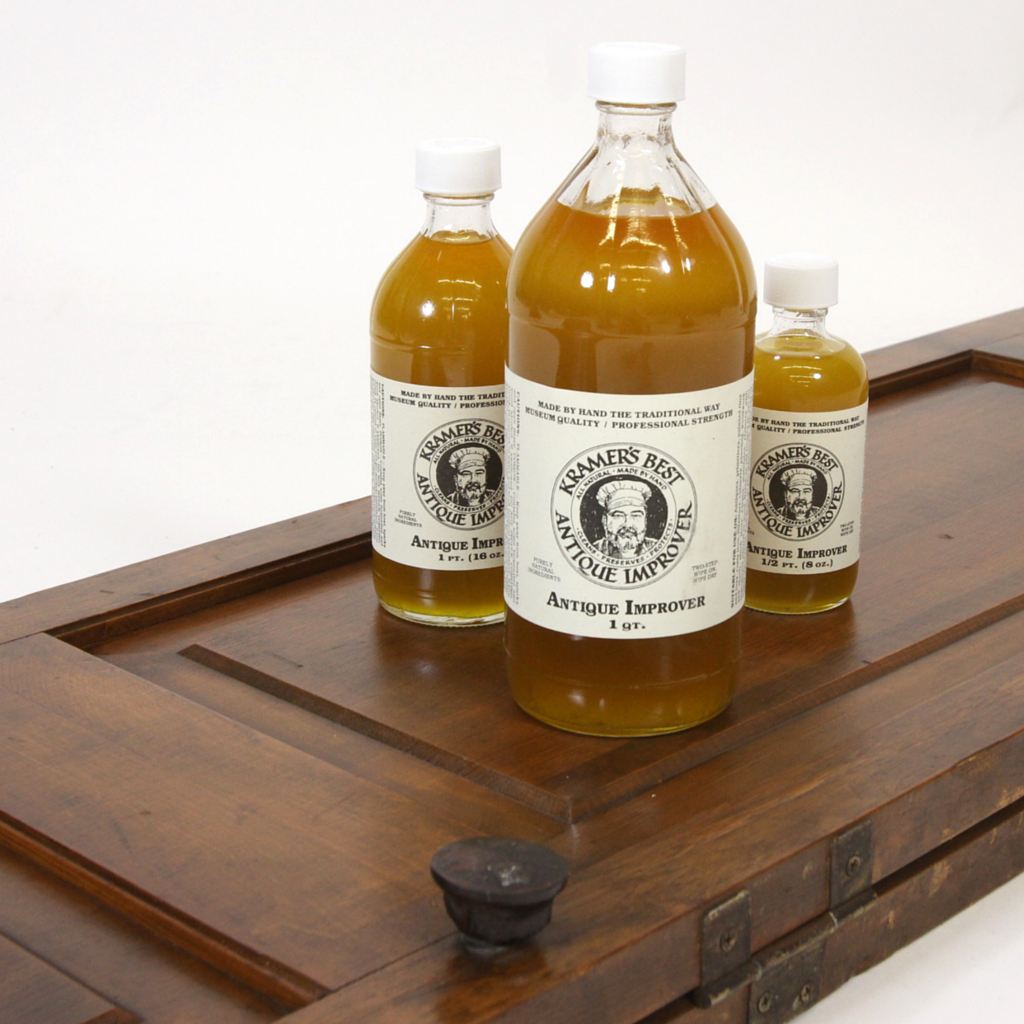Transformation Tuesday with Kramer's Best Antique Improver

We spend our days working with the old and the beautiful. Sometimes the items that come walking through our door are far more old than beautiful, and they’re almost always covered in something - dirt, dust, grime or the remnants of an unfortunate painting slip. Back in the early 2000’s, when we started working with antiques for re-sale (read how we got our start here), we found Kramer’s Best Antique Improver for sale at a local antique mall. We were skeptical. It seemed a bit pricey for a small bottle of unknown liquid, but we took a gamble.
We brought it home and tried it out...and became believers.
We’ve been using the product for more than 12 years now. I think we can fairly accurately call ourselves experts through experience. We use the Antique Improver on a large percentage of the items that come into our shop, with the hope that we will outreach the expectations of our customers. On multiple occasions, we have had customers write and asked how in the world we cleaned the item they purchased to achieve such great results. We’ve sold bottles locally, but have never had the opportunity to share it with the rest of the world.
In June of 2015, we had a duh moment. We’ve never been afraid to share our love for Kramer’s, so why not sell it? We also started creating guides and tutorial videos to share all that we had learned over the years with others. Bottles have been selling consistently, and Kramer’s love is spreading across the nation.
So today, my dear blog readers, we went all kinds of Transformation Tuesday. We dug out this old, solid wood closet door from the depths of our storage room.

You can see that it has some wear in the form of dings and scratches, as well as some kind of black residue.

We gathered our tools:
- My dad (aka the boss, who isn't afraid of a little hard work)
- Protective gloves
- Paint brush
- Steel wool
- Clean towel
- Kramer's Best Antique Improver
Only the left half of the door was cleaned for the sake of demonstration. We started by using a paint brush to apply some Kramer's Best Antique Improver to the door.

Once a large portion of the surface was covered with Antique Improver, we used a piece of steel wool to remove any dirt, debris and grime.

Once the door was thoroughly cleaned with the steel wool, we wiped it down with a clean towel. It is way more fun to use a white towel so you can see the years of age and wear wiping away.

And, voila! Our door half has transformed with just one application. The best part? If we go over the door again, it will only get better.


Kramer's Best Antique Improver is unique product made by hand right in the heart of America. It cleans, conditions and restores the existing finish on various materials. It is compatible with wood, metal and many other surfaces. The Antique Improver replaces natural oils and emollients, which are often lost over time.
Kramer's Best is the ideal product for your furniture, paneling, cupboards, woodwork and floors. It can be used on varnished, painted, shellacked and oiled finishes. It also works wonders on antique toys, tools, guns, collectibles and so much more.
This product helps to preserve the authenticity of many valuable antiques by restoring the finish to the original state. Quite often, stripping and re-finishing becomes unnecessary. Kramer's also halts any deterioration, cracking and flaking found on the surface of many older items. It has also been known to remove blemishes and water ring damage.
Kramer's Best Antique Improver contains no petroleum products, which are found in most modern wood-cleaning products. When first applied, these petrochemical-based products may make your item appear better, but will immediately begin to dry out. As they evaporate, they take the natural oils along with them, and many times leave behind an unpleasant residue. Kramer's is composed of 14 all-natural ingredients - extracts from plants and trees - which are naturally found in wood. These ingredients work along with the wood to enrich it and greatly improve its appearance.

If you would like to see more about Kramer's, you can check out our favorite products page. You can also go straight to the product page. You may also check out our YouTube Channel to see some of our tutorial videos.
Leave a comment
Also in View from the RoofTop
Transformation Tuesday - Wall Decor Letters
A New Perspective for Today: An Eloquent Monkey
Frankly, I am not fond of monkeys. They affect me the way spiders and snakes affect other people. The flying monkeys in “The Wizard of Oz” and the rogue monkeys in Robin Williams’s “Jumanji” were menacing to me, and I closed my eyes so I wouldn’t have to see them.
One Day, One Mall, and Four Booths
We headed to Columbia on Saturday morning to meet a new online acquaintance for a furniture trade. I didn't realize it at the time, but the Willett Mid-Century Modern end table she placed in our hands would become the centerpiece for a collection of untold treasures.





